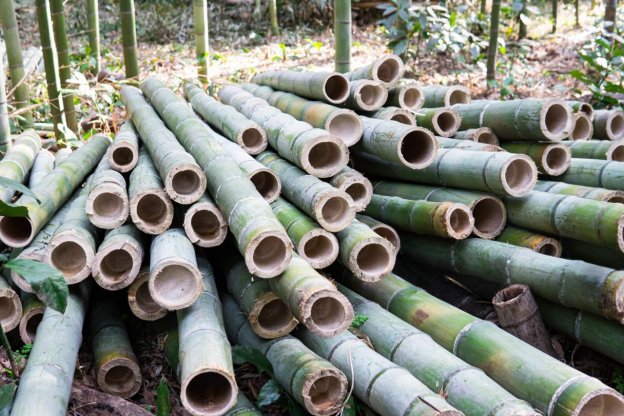Modern biomass-to-charcoal technology has evolved well beyond traditional kiln-based methods. With the deployment of advanced equipment such as the bamboo charcoal making machine and straw charcoal machine, manufacturers now process a wide range of agricultural and forestry residues into high-quality charcoal. The selection of raw material plays a critical role in determining the carbon yield, combustion quality, and end-use suitability of the produced charcoal. The following are the top five raw materials currently favored for charcoal production using industrial-grade charcoal machine systems.
1. Bamboo
Bamboo is one of the most efficient and fast-growing renewable resources available for carbonization. It offers a high lignin content and low ash residue, making it highly suitable for thermal conversion. Using a bamboo charcoal making machine, operators can produce dense, long-burning charcoal ideal for barbecuing, industrial heating, and even air purification. The material’s natural hollow structure also accelerates carbonization and ensures high thermal efficiency.

2. Straw
Crop residues such as wheat, barley, and corn straw are extensively utilized in modern pyrolysis systems. The straw charcoal machine is engineered to handle bulk fibrous input with uniform feeding and controlled heating. Straw-based charcoal has moderate calorific value and low fixed carbon but is ideal for rural cooking, domestic heating, and reducing open-field burning. It is a practical way to convert waste into thermal energy while mitigating greenhouse gas emissions.

3. Rice Husk
Rice husk, an abundant byproduct from rice milling, contains approximately 75–90% organic matter and is rich in volatile components. When processed in a specialized charcoal machine, rice husk can yield charcoal with consistent pore structure and surface area. This material is widely applied in agricultural soil improvement, activated carbon production, and even in lightweight construction composites due to its silica content.
4. Jute Stick
Primarily cultivated in South Asia, jute stick is the woody core remaining after fiber extraction. Its high carbon density and compact structure make it particularly valuable in charcoal production. A jute stick charcoal making machine can produce charcoal with uniform shape, minimal moisture, and long combustion duration. The output is commonly used for household fuel in developing regions and as a feedstock for activated carbon.
5. Coconut Shell
Coconut shell, a byproduct of coconut processing, is another premium-grade input material. Its hard, dense structure results in a high fixed carbon ratio and low ash content. In modern charcoal machine systems, coconut shell undergoes clean pyrolysis to yield smokeless, high-efficiency charcoal. This type of charcoal is frequently used in metallurgy, water purification, and export-grade grilling applications.
Conclusion
The evolution of charcoal production from rudimentary methods to high-efficiency pyrolysis plants has expanded the scope of usable feedstock. Materials such as bamboo, straw, and jute stick are now systematically converted into valuable carbon-based products using specialized machinery. Whether employing a straw charcoal machine for crop residue or a jute stick charcoal making machine for woody biomass, the integration of modern technology ensures higher yield, cleaner emissions, and superior quality control. This advancement supports not only circular economy models but also adds tangible value to agricultural waste streams.
